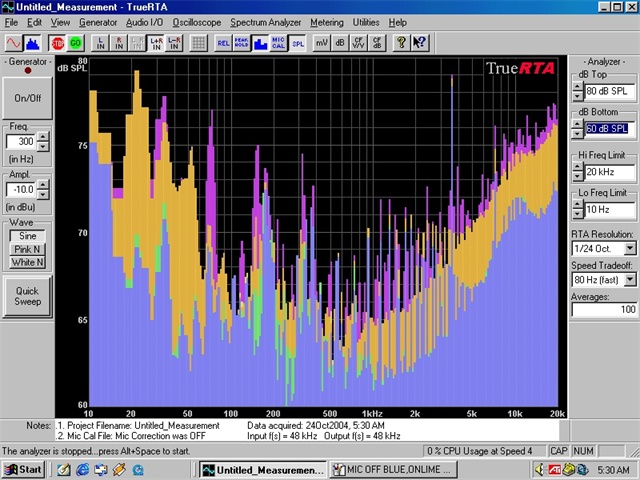

Yet clearly some people are depressed and some people are not. It isn't caused by bacteria or a virus, nor can we do a blood test to measure its existence. Depression is a disorder, its a kind of mental disease. Let's take something concrete for a minute and make it a little fuzzy to show the point. I do a similar kind of work, measuring human perception in an objective way. I think groups like Harman have helped really make it a better science. There are a number of problems with the idea that make it as much an art as it is a science. Measurements that are consistent with our subjective is important, but man is that a tough topic to tackle. Of course you may start finding resonances and rattles you don't typically hear and it could start a whole new kind of nervosa. REW also has a number of tests that you can use to look for rattles, which at high volume and with a lot of bass is very common in a car. If I wanted to use the lower crossover point, It would tell me I need to replace the tweeters with something that handles a lower crossover point. If I saw this in a car setup I would probably try a steeper slope and/or higher crossover point for the tweeters. At 75db's (at a 12 foot distance) the tweeter had about 3-4% 3rd harmonic distortion and 1.5% 4th and 5th harmonic.

It looks suspiciously like tweeter distortion and my guess would be that the tweeter is slightly overloading. I took a quick look at the distortion graphs and noticed that up around the crossover point, there is a rise in harmonic distortion. Looking at the response alone makes them look great. These are well regarded speakers and their axial response is very flat. Just as an example, I am measuring a pair of Pioneer speakers designed by Andrew Jones right now. It allows you to also look at phase, the actual impulse response, and distortion. In any case you may want to try my results and see what you see. I have even played around a bit with FIR filters for car correction, but I no longer use the kind of equipment I used to use. As I used to be an IASCA competitor I've often wondered about using these measurements to make a highly competitive system since todays measurements and digital signal processing far exceeds what was possible 18 years ago. The only real advantage to the impulse response measurement is that it let's you see the some additional information, only some of which is likely useful for a car. I typically average the measurements to get a sense what they look like on average, but I also look at all individual measurements as that gives me clues. To get a response that is representative of the sound we hear, I take multiple measurements using the sweep method at each location around where my head is. I would only use the RTA for level setting, quick checks, or distortion measurements. I use the sweep method which is a bit more accurate. My measurement approach however doesn't use the RTA to measure the speaker response typically. I haven't been involved in car audio in 18 years so I can't really share much.


 0 kommentar(er)
0 kommentar(er)
